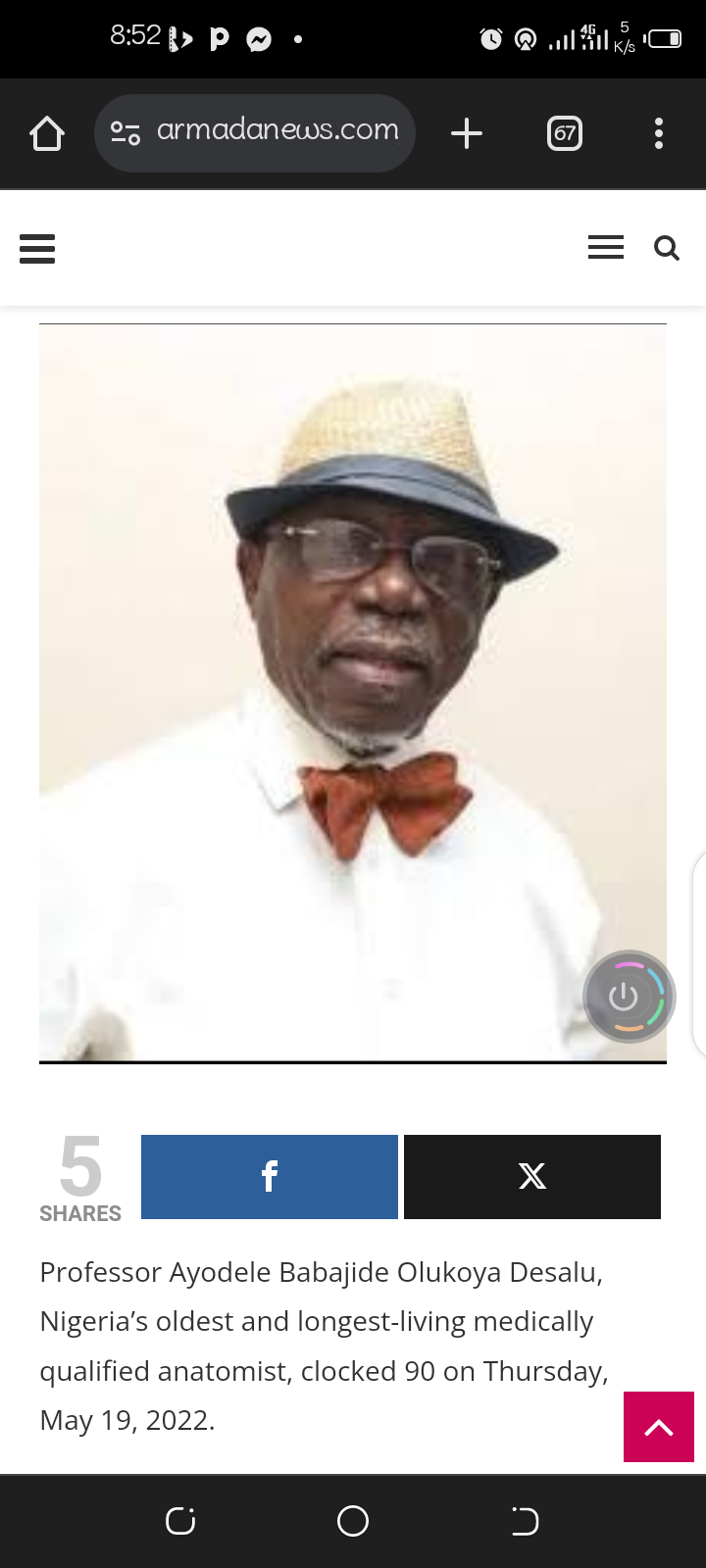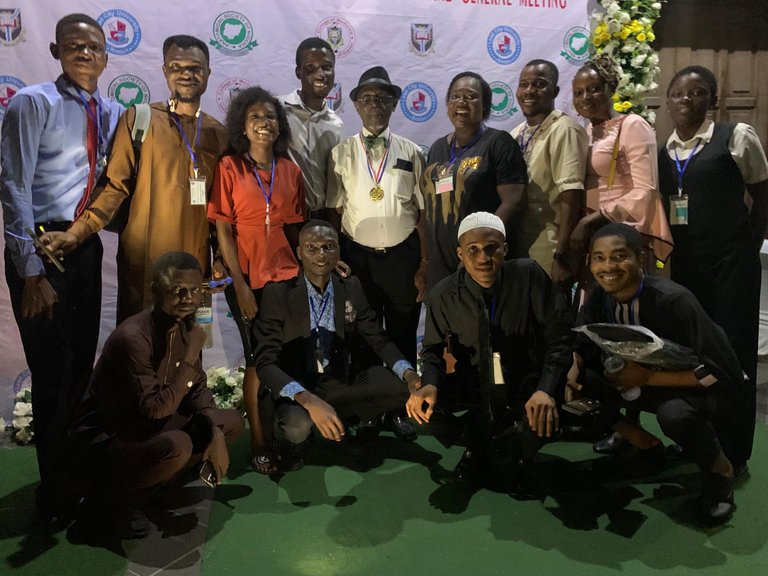

It was a bright morning in Ibadan, a city rich in academic tradition and cultural history, bustling with scholars and enthusiasts gathered for a prestigious conference on anatomy. The grand hall was alive with the hum of intellectual discussions, filled with the presence of seasoned professors, ambitious PhD candidates, and eager students—all united by a shared passion for unraveling the mysteries of the human body.
As the conference sessions unfolded, they revealed groundbreaking research and sparked invigorating debates. But for me, one highlight of the event loomed large: the dinner night, an evening set aside to honor a living legend—the oldest anatomist in Nigeria, Professor Ayodele Babajide Olukoya Desalu.
The evening was a masterful blend of elegance and cultural pride. The dining hall was bathed in soft, ambient lighting, with motifs of Nigerian heritage adorning the walls and tables. The air buzzed with anticipation as guests mingled, exchanging laughter and memories. Amid the festivities, the arrival of the guest of honor silenced the room.
In walked Prof. A.B.O. Desalu, a figure who commanded respect without demanding it. At 90 years of age, his demeanor was marked by dignity, his presence a testament to decades of relentless pursuit of knowledge and excellence. As he approached the head table, the room erupted into a standing ovation—a gesture of collective gratitude for a man whose contributions had not only shaped the field of anatomy in Nigeria but also inspired generations of anatomists across the globe.
For many, including myself, this moment was personal. Prof. Desalu's career began in an era when anatomy as a discipline was still finding its footing in Nigeria. A pioneer, he navigated uncharted territories, establishing anatomical laboratories, developing teaching curricula, and mentoring countless students who would go on to become leaders in medicine, research, and academia. His work laid the foundation for modern anatomical sciences in Nigeria, earning him the title "Patriarch of Anatomy."
When I finally had the opportunity to meet him, the weight of the moment was palpable. With a blend of nervousness and excitement, I approached him with a group of peers. His warm smile and steady handshake immediately put us at ease. “It is young minds like yours that give me hope for the future of anatomy in Nigeria,” he said, his words resonating deeply.
We shared stories, took photos, and listened intently as he recounted his journey. He spoke of the early challenges—of limited resources, skepticism about the discipline, and the struggle to establish anatomy as a critical component of medical education. Yet, he also shared triumphs: the joy of seeing his students excel, the milestones of institutional growth, and the evolution of anatomy into a respected field in Nigeria.
His anecdotes painted a vivid picture of resilience, foresight, and unwavering dedication. One story, in particular, stood out—a tale of how he once conducted anatomy lessons using only sketches and verbal descriptions when cadaver availability was scarce. “Innovation is born out of necessity,” he said with a twinkle in his eye, reminding us that adversity often inspires creativity.
As the night drew to a close, I felt a profound sense of purpose. Meeting Prof. Desalu was more than an honor—it was a call to action. His life and career were a testament to the power of perseverance and the importance of leaving a lasting legacy.
For many of us at the conference, that evening was a reminder of our shared responsibility to uphold the standards set by pioneers like Prof. Desalu. We left with a renewed commitment to contribute meaningfully to the field of anatomy, ensuring that its rich tradition in Nigeria continues to thrive for generations to come.
Meeting Prof. Desalu must have been inspiring! His perseverance through early challenges truly shaped anatomy in Nigeria. How can his innovative approach to adversity be applied to today’s educational and research challenges?
Sorry for the late response @etukakpan01 I have been having problems with my ecency. It is probably due to low ecency points. It says wait to power up hive... You asked a mind blowing question, I must say but the first thing that crossed my mind was resourcefulness. The use of basic tools and creative methods when resources are limited, like virtual simulations in place of physical equipment. Why would you spend too much money on tissue processing when other basic histological methods are available for the same result.
Another is Innovation. adversity drives the development of low-cost, scalable solutions, like affordable diagnostic tools.
Sorry for the late response @etukakpan01 I have been having problems with my ecency. It is probably due to low ecency points. It says wait to power up hive... You asked a mind blowing question, I must say but the first thing that crossed my mind was resourcefulness. The use of basic tools and creative methods when resources are limited, like virtual simulations in place of physical equipment. Why would you spend too much money on tissue processing when other basic histological methods are available for the same result.
Another is Innovation. adversity drives the development of low-cost, scalable solutions, like affordable diagnostic tools.
You responded satisfactorily.
Thanks for this beautiful comment. You motivate me.
I wanted to delete everything about me. They say that I am a robot. Actually, I do not believe it.